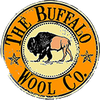Waterproofing Bison Leather Gloves and Boots.
Bison leather is renowned for its strength, durability, and unique texture. To maintain its quality and extend its lifespan, waterproofing is essential. Two popular methods for waterproofing bison leather involve using either bison tallow or beeswax. In this article, we will explore the benefits and processes of using both tallow and beeswax to waterproof bison leather.
Waterproofing Bison Leather with Bison Tallow
Bison tallow is a traditional choice for waterproofing bison leather. It is derived from the bison itself, making it an organic and sustainable option.
To use tallow to waterproof leather, its not difficult, start by heating the tallow until it becomes a liquid, then applying it to the leather in a thin, even layer. This process allows the tallow to penetrate the leather fibers, creating a barrier against moisture. Here is a step-by-step guide:
-
Preparation: Start by cleaning the leather item to remove any dirt or debris. This ensures the tallow can properly penetrate the leather.
-
Heating the Tallow: Melt the tallow by heating it in a pot or double boiler over low heat. Be careful not to overheat the tallow, as this could damage the leather.
-
Application: Once the tallow has melted, use a clean cloth or a brush to apply it to the leather in a thin, even layer. Make sure to cover the entire surface of the leather item, including seams and stitching.
-
Absorption: Allow the tallow to absorb into the leather for several hours or overnight. This allows the tallow to penetrate the leather fibers and create a waterproof barrier.
-
Buffing: After the tallow has been absorbed, use a clean cloth to buff the leather, removing any excess tallow and creating a smooth finish.
By following this process, you can effectively waterproof your leather item using tallow. Remember to reapply the tallow periodically to maintain the waterproofing effect, especially after cleaning or conditioning the leather.
Benefits of Using Bison Tallow
-
Natural and Sustainable: Bison tallow is an environmentally friendly option since it comes directly from the animal.
-
Effective Waterproofing: The tallow forms a protective layer that repels water and keeps the leather dry.
-
Conditioning: Tallow also conditions the leather, keeping it soft and supple.
Waterproofing Bison Leather with Beeswax
Beeswax is another popular choice for waterproofing bison leather. It is derived from honeybees and has been used for centuries to protect and preserve leather. The process involves melting the beeswax and applying it to the leather in a thin, even layer.
To waterproof leather using beeswax,
-
Melt the beeswax: You can do this by placing it in a pan over low heat or by using a microwave.
-
Apply the melted beeswax to the leather: Use a soft brush, clean toothbrush, or your fingers to work the wax into the leather in a circular motion. A soft cloth is recommended for a smoother application.
-
Ensure even coverage: Work the beeswax into the leather's seams and other areas where water might penetrate.
-
Allow the beeswax to dry: Let the leather sit for several minutes (15 or so) after application.
-
Wipe away excess wax: Use a clean soft cloth to remove any excess beeswax from the leather's surface.
-
Buff the leather: Use a dry cloth to buff the leather, creating a smooth, waterproof finish.
Remember to use a small amount of beeswax and work it into the leather gently to achieve the best results.
Benefits of Using Beeswax
-
Natural and Safe: Beeswax is a natural product, making it safe for both the leather and the user.
-
Effective Waterproofing: Beeswax creates a strong barrier against moisture, effectively waterproofing the leather.
-
Easy Application: Beeswax is easy to apply and can be used in combination with other leather care products.
Both bison tallow and beeswax are effective methods for waterproofing bison leather. Bison tallow offers a natural, sustainable option that also conditions the leather, while beeswax provides a safe, easy-to-apply solution that effectively repels water. Ultimately, the choice between the two depends on personal preference and the specific needs of the leather item.


Leave a comment